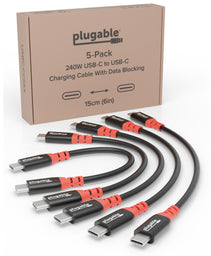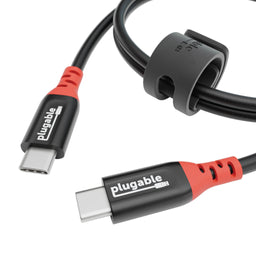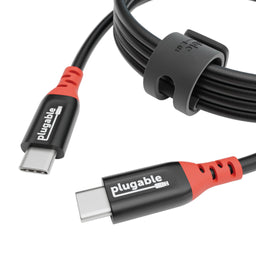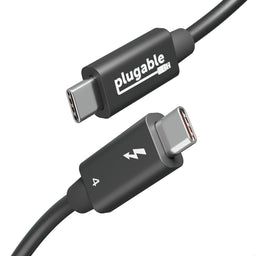















Hassle free, 2-Year Warranty
Fast, Free Shipping on Orders $35+
Lifetime Technical Support
30-Day Money Back Guarantee
Plugable USB-C Cables, Data Blocker Charge Only, 240W (6 inch, Pack of 5)
$24.95 USD
SKU: USBC-CCS5XAmazon Rating : (57 Reviews)
Features
- Get Charged Up— Charge up all of your devices. This 5-pack of Plugable 6in, 240W USB-C charge cables are built for secure, clutter-free charging. Bright red connectors and “Data-Blocking Charging Cable” tags let you know what to expect at a glance
- Extended Power Range to 240W— Each 240W USB C cable supports Extended Power Range up to 240W (48V/5A), perfect for laptops, tablets, and more. A built-in E-Marker ensures safe USB PD 3.1 performance
- Safer by Design— Each heavy-duty USB C charging cable omits data lines for true security and protection against juice jacking in airports, schools, libraries, and public kiosks. No need to carry around additional data blocking adapters
- Universal USB-C Charging— Works with any Power Delivery-compliant device up to 240W, from laptops to tablets—ideal as a MacBook Pro cable for home, office, or travel charging setups
- Lifetime Support— Each USB C 240w cable has been designed with reliability at its core and was built to meet the deployment demands of IT departments and the ease of use necessary for home offices. Includes lifetime support from our North American team of connectivity experts
Free 3-Day Continental U.S. Shipping on Orders Over $35!











